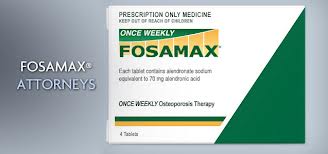Lone Pine’s Impact On Pharma Products Litigation
By admin on December 20, 2012
We have written previously about the increasing acceptance by courts to entertain the use of Lone Pine orders as a case management tool. For example, in the Happyland Social Club Fire Litigation, which involved 87 wrongful death claims, the Bronx Supreme Court’s entry in 1992 of a Lone Pine order was instrumental in obtaining dismissals on behalf of defendants whose products plaintiffs could not identify as being in the club at the time of the fire.
 More recently, we discussed the use of a Lone Pine order by a Colorado state court in a hydrofracking toxic tort case. In that matter, the court dismissed the claims of plaintiffs who failed to submit sworn expert affidavits establishing a causal relationship between their illnesses and hydrofracking chemicals they claimed to have been exposed to.
More recently, we discussed the use of a Lone Pine order by a Colorado state court in a hydrofracking toxic tort case. In that matter, the court dismissed the claims of plaintiffs who failed to submit sworn expert affidavits establishing a causal relationship between their illnesses and hydrofracking chemicals they claimed to have been exposed to.
Increasingly, Lone Pine orders are being employed as a case management tool in pharmaceutical mass tort cases. Most recently, Judge John F. Keenan, who presides over the Merck Fosamax Products Liability MDL in the SDNY, issued a sweeping Lone Pine order on November 20, 2012.
In its Opinion and Order, the court considered whether to apply the Lone Pine order to all of the plaintiffs’ cases or merely a sub-set. In evaluating this issue, the court observed that was at least some medical or scientific evidence that Fosamax could cause osteonecrosis of the jaw (known as “ONJ”). In light of this purported evidence, the court refused to apply the Lone Pine order to those plaintiffs alleging that they suffered from ONJ.
Why did Judge Keenan enter the Lone Pine order in 2012 when he had rejected earlier efforts by Merck to enter a Lone Pine order in 2010 and 2011? In short, he had become skeptical about the bona fides of plaintiffs’ claims and the candor of Plaintiff’s Steering Committee. “Plaintiffs’ habit of dismissing cases after both parties have expended time and money on case-specific discovery demonstrates that this MDL is ripe for a Lone Pine order.”
Based upon plaintiff’s pattern of behavior, the court said it had “reason to believe that spurious or meritless cases are lurking in the some 1,000 cases on the MDL docket.” The court noted that “more than 50% of the cases set for trial had been dismissed by plaintiffs as had some 31% of cases that had been selected for discovery.
Judge Keenan has been hearing cases in the SDNY since September 1983. Having presided over trials for thirty years, he has developed good instincts in determining when judicial resources are being squandered. Although he did not come right out and state as much, he had clearly become frustrated by Plaintiff’s Steering Committee wasting the court’s time and forcing Merck’s trial counsel to jump through unnecessary hoops.
trials for thirty years, he has developed good instincts in determining when judicial resources are being squandered. Although he did not come right out and state as much, he had clearly become frustrated by Plaintiff’s Steering Committee wasting the court’s time and forcing Merck’s trial counsel to jump through unnecessary hoops.
Apart from the litany of stringent (and precedential) Lone Pine requirements imposed upon the plaintiffs to whom the order applied, the decision is helpful because it cites with approval the decisions of multiple other courts overseeing complex pharmaceutical MDLs using Lone Pine orders to streamline their dockets. The cited cases include: In re Avandia Mktg., Sales Practices and Prods. Liab. Litig., MDL No. 1871 (E.D. Pa. Nov. 15, 2010); In re Zyprexa Prods. Liab. Litig., MDL No. 1596 (E.D.N.Y. June 2, 2010); In re Bextra and Celebrex Mktg. Sales Practices and Prod. Liab. Litig., MDL No. 1699 (N.D. Cal. Aug. 1, 2008); In re Vioxx Prods. Liab. Litig., MDL No. 1657 (E.D. La. Nov. 9, 2007, July 6, 2009); In re Rezulin Prods. Liab. Litig., MDL No. 1348 (S.D.N.Y. May 9, 2005); In re Baycol Prods. Liab. Litig., MDL No. 1431 (D. Minn. Mar. 18, 2004).
In ruling on the Lone Pine application, the court rejected the Plaintiff’s Steering Committee’s suggestion that the MDL had outlived its usefulness and that the court should adopt an “exit plan” and remand all of the cases for trial rather than entertain a Lone Pine order. The court also rejected Plaintiffs’ argument that a Lone Pine order should only be entertained after a global settlement was reached.
The court reasoned that the primary purpose of Lone Pine orders is to eliminate meritless cases, which is at best only tangentially related to the status of settlement negotiations. Whether the MDL culminates in a global or partial settlement, or the remand of cases back to their home districts, the court believed that a Lone Pine order would boost efficiency under either scenario. “In the event the parties reach a settlement, the elimination of spurious claims will ensure that only plaintiffs with meritorious cases are compensated. If the MDL concludes without settlement, and cases are transferred back to their home districts, Lone Pine will ensure that the home districts receive only viable cases.”
